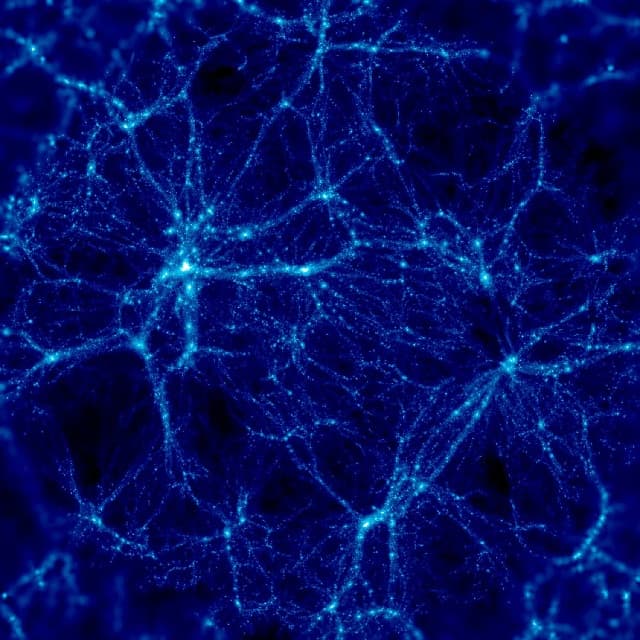China’s First Dark Matter Satellite 'Wukong' Goes Into Orbit
China’s very first dark matter detection satellite, nicknamed “Wukongâ€, was put into orbit by its Long March 2-D rocket in the early hours of Thursday, taking off from the Jiuquan Satellite launch centre in the Gansu province. “Wukong†refers to the Monkey King with penetrating eyes from the Chinese story, “Journey to the Westâ€. The Dark Matter Particle Explorer (DAMPE) satellite launch marked China’s entry into the race to detect and prove the existence of the elusive substance.
So far, dark matter is a hypothetical concept, although several observations have given it strength. Wukong, which boasts the widest ever observation spectrum in dark matter detection satellites and three times their energy resolution, will scan the observable space in all directions from its orbit for two years, and then focus on areas that show the most promise.
It is believed that only 5% of the entire universe is filled with the matter we perceive as of yet, and only a fraction of that has been observed by the human race. The rest of the vacuum of space is where dark matter is believed to exist.

Fig: Proposed distribution of matter in the universe
The existence of dark matter was proposed when scientists discovered that the universe doesn’t have nearly enough ordinary matter to fill the whole of it. And the space between couldn’t be all empty either. Hence, the concept of “dark matterâ€, called so because of its continued invisibility to us, was introduced into the structural model of the universe.
This incorporation was widely accepted because after it, the confusing models of the universe that existed till then began to make sense. A lot of information thought to be errors or anomalies were accepted as valid observations and were duplicated. Some behavioral patterns of matter on a cosmic scale, which were till then thought to be strange, began to be seen as the result of dark matter interactions. In short, the concept of dark matter took us a couple of steps closer to understanding our universe that much more.
.jpg)
Fig: Amount of substance in the universe
So why, then, has a considerable amount of substance, with constant and consequential interactions with other matter, gone completely unseen? The answer is that dark matter does not absorb or emit any kind of radiation/energy, and hence, is truly invisible.
What Wukong hopes to do is look for tell-tale signs of its interaction with ordinary matter, and provide useful data that can be sorted out and arranged to give definitive proof, and is the newest addition to the vast array of scientific equipment dedicated to the study of dark matter.
The initial findings of the 1.9 ton satellite are expected to be published by the end of 2016 and we, along with the whole scientific community, hope it lives up to its name.
Source: #-Link-Snipped-#, #-Link-Snipped-#
So far, dark matter is a hypothetical concept, although several observations have given it strength. Wukong, which boasts the widest ever observation spectrum in dark matter detection satellites and three times their energy resolution, will scan the observable space in all directions from its orbit for two years, and then focus on areas that show the most promise.
It is believed that only 5% of the entire universe is filled with the matter we perceive as of yet, and only a fraction of that has been observed by the human race. The rest of the vacuum of space is where dark matter is believed to exist.

Fig: Proposed distribution of matter in the universe
This incorporation was widely accepted because after it, the confusing models of the universe that existed till then began to make sense. A lot of information thought to be errors or anomalies were accepted as valid observations and were duplicated. Some behavioral patterns of matter on a cosmic scale, which were till then thought to be strange, began to be seen as the result of dark matter interactions. In short, the concept of dark matter took us a couple of steps closer to understanding our universe that much more.
.jpg)
Fig: Amount of substance in the universe
What Wukong hopes to do is look for tell-tale signs of its interaction with ordinary matter, and provide useful data that can be sorted out and arranged to give definitive proof, and is the newest addition to the vast array of scientific equipment dedicated to the study of dark matter.
The initial findings of the 1.9 ton satellite are expected to be published by the end of 2016 and we, along with the whole scientific community, hope it lives up to its name.
Source: #-Link-Snipped-#, #-Link-Snipped-#
0
